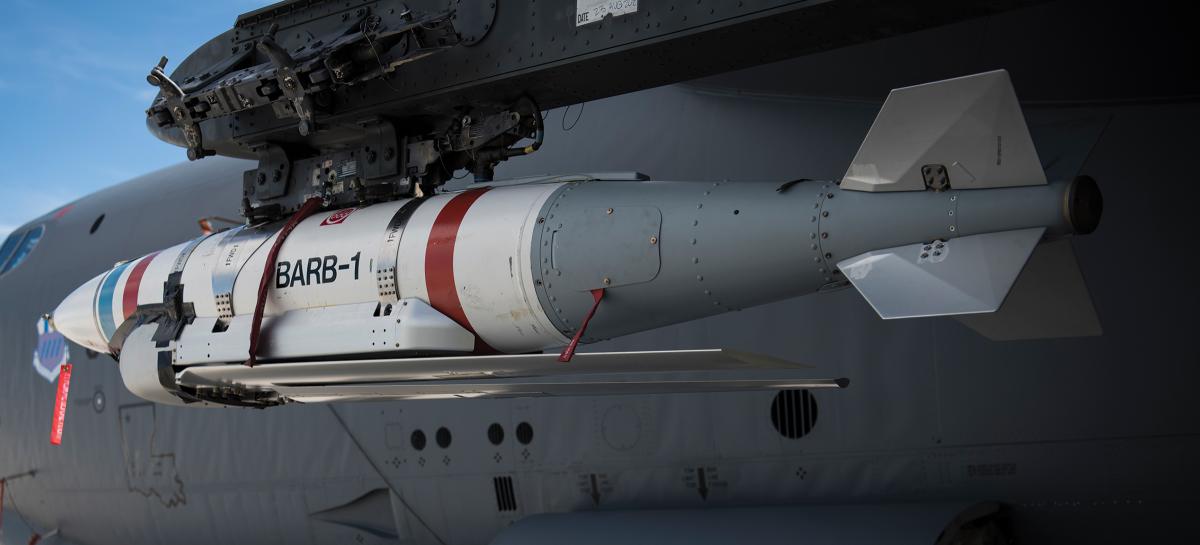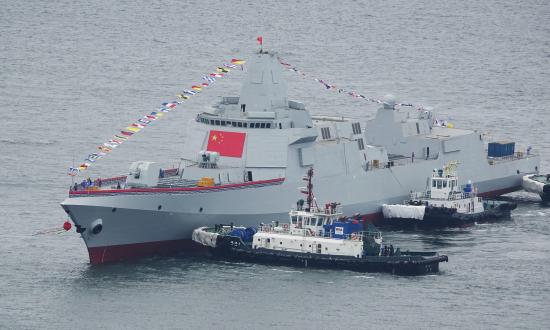Chief of Naval Operations
Admiral Michael M. Gilday has good reason to recall the morning of 18 February 1991, during Operation Desert Storm. The USS Princeton (CG-59) was patrolling off Failaka Island in the northern Persian Gulf, with a young Gilday in the cruiser’s crew. At 0715 local time, two MN103 Manta bottom multiple-influence mines (each armed with 325 pounds of HBX explosive) fired.1
The first Manta went off directly under the warship’s port rudder, and the second some 200 yards off the starboard bow. The first cracked the superstructure, buckled the hull at three frames, jammed the port rudder, damaged the starboard propeller shaft, and flooded the number 3 switchboard room from chill-water pipe cracks that shut down combat systems for 90 minutes—a “mission kill” that rendered missiles and guns aft inoperable and injured three crewmembers.
One lesson was that a single mine not only can ruin a skipper’s day, but also can affect overall strategy. Almost immediately following the incident, the multinational coalition shelved plans to liberate Kuwait with an assault from the sea.
If U.S. adversaries—from China and Russia to violent extremists—can take advantage of the asymmetric value of mines, why does the Navy not incorporate this capability into strategic and operational objectives? Thirty years later, the Navy continues to relegate mine warfare—mines, mining, and mine countermeasures—to a budgetary, strategic, and operational backwater.
The 2020 triservice maritime strategy mentions mine warfare only twice, in the context of alliances and partnerships as “true force multipliers in times of crisis. Partner and ally deployments . . . also provide specialty capabilities, such as mine warfare and antisubmarine warfare.”2 “Mine warfare” in this instance is code for “mine countermeasures.” The strategy also promises to “expand mine warfare capabilities” as components of undersea warfare, clearly a reference to mines and mining. But hope can be fickle. The last time the Navy put a new-design mine into service was 1983, and today’s U.S. mines and mining capabilities are obsolescent, with questionable value in crises and conflicts.
Tomorrow’s naval mines/mining technologies, systems, concepts of operations, and operational planning tools look to energize these weapons that wait by what they will bring to the fight—and how they will get there. More, these initiatives and programs are even shaping our understanding of what constitutes a mine.
In the meantime, the Navy is upgrading the shallow-water Quickstrike conventional-bomb-conversion bottom mines with the state-of-the-art Mk 71 target-detection-device (TDD) firing mechanism. It senses magnetic, seismic, and pressure signatures and can be programmed with target-processing and counter-countermeasures algorithms. The Navy’s miners now can optimize mining performance against many different targets.
A developmental 2,000-pound version of the Quickstrike-ER earned the Office of the Secretary of Defense 2020 Joint Capability Technology Demonstration program-of-the-year award. Program officials note they are also developing a propulsion pack for a power-glide version of the ER, eventually leading perhaps to “cruise-missile mines.”
In addition to expanding aerial mining options, efforts are ongoing to expand undersea-delivered mining capabilities. The Navy is repurposing excess Mk 67 Submarine-Launched Mobile Mine (SLMM) warheads to make Clandestine Delivered Mines (CDMs) to be delivered by Orca unmanned vehicles.
Another concept envisions using networked “encapsulated effectors” (torpedoes hidden in seafloor cases) to carry out numerous vital seabed warfare activities. The new device could also support Marine Corps expeditionary advanced base operations antisubmarine warfare efforts, as well as traditional mining functions.3 Future U.S. mines will be elements of expeditionary distributed lethality, contributing to forward area operational objectives and overall warfighting effects.
So, CNO: Remember 18 February 1991. The mining objective now must be to make U.S. adversaries worry about U.S. mines and seabed warfare systems more than their weapons concern the United States.
—Scott C. Truver
1. Scott C. Truver, “Lessons from the Princeton Incident,” International Defense Review, 7/1991.
2. U.S. Navy, Marine Corps, and Coast Guard, Advantage at Sea: Prevailing with Integrated All-domain Naval Power, December 2020, 13, 22.
3. “Tentative Manual for Expeditionary Advanced Base Operations,” Headquarters United States Marine Corps, 8 February 2021.






